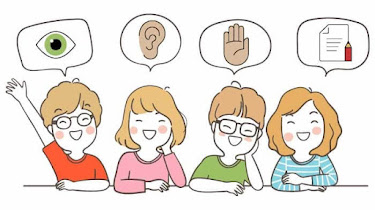Individual Learner Differences
As I reflect on my own experience with second language learning, I can think back to one successful language learning experience that I had during my elementary school years while I was learning my L2, which was French. I had an elementary French teacher who I remember so vividly, and the reason why my learning experience was overall positive and successful was because she made it fun and engaging for her students. She would still teach the components of the curriculum and all the target items were taught; however, we often did not realize that we were learning difficult material because of the way she would disguise it throughout her instruction. For example, we would play fun games and interactive tasks with other students which made the language learning process much more enjoyable compared to if she would have solely relied on textbook material to teach us the aspects of the French language.
Additionally, this past language teacher of mine made sure to incorporate diverse instructional approaches, which are necessary to accommodate learners’ aptitude profiles (Lightbown & Spada, 2021). She understood that all the students had various learning styles, which is why she made sure to use diverse teaching approaches which would take into account such differences to benefit all students. Looking back at it now, I truly believe that I enjoyed this teacher’s class because she made us students feel relevant, valued, and considered throughout her instruction.
As a language teacher, I think that it is important to consider students’ needs when building content for instruction, and this is something that I will do in the future in my own classroom (Hummel, 2021) . She made sure that we had exposure to the language even beyond her classroom, and she did so by assigning “TV logs” which had to be completed weekly by watching a tv show in French and writing something that we remembered. Moreover, this teacher of mine always motivated her students by providing us with effective praise. Therefore, my language teacher engaged in positive retrospective self-evaluation and activity design, which consists of providing students with effective praise and the elicitation of self/peer-correction sessions (Lightbown & Spada, 2021). It was clear that the students enjoyed her French class, as there were high levels of engagement, and according to Lightbown & Spada (2021), engagement levels are significant predictors of learners’ motivation.
Overall, I believe this language learning experience was successful because we had a teacher who really understood her students and always placed their needs above all, while also carrying out with the curriculum’s targeted areas.
One unsuccessful language learning experience that I had was during my high school years, in my Secondary 4 English class. Although I had already acquired many components of the English language because English was my L1, such classes were meant to solidify our knowledge and allow us to continue putting the language to use. However, this teacher only relied on course books and readings to teach; there was no more nor any less to his instructional approaches. He would teach what he had to teach, without any modifications or accommodations to his learners’ needs. His teaching style was very structured and consisted of typical teacher-centered instruction, which has not been proved to be very efficient for learners (Lightbown & Spada, 2021). In addition, there were no participation structures in groups/pairs and there were no opportunities for students to apply the knowledge to tasks; the whole course was very much rigid and concrete, which has been seen to be ineffective for language learners (Dornyei et al., 2015; Hummel, 2021). This language learning experience was unsuccessful because I did not feel as though the presented lessons were relevant or authentic to me. Moreover, language learners require diverse input (Lightbown & Spada, 2021), however this teacher only provided us with strict exposure that was really seen within educational settings.
Therefore, I believe that successful language teachers need to not only understand their learners, but also relate to them and accommodate their perspectives.
Dörnyei, Z., Henry, A., & Muir, C. (2015). Motivational currents in language learning: Framework for focused interventions. Routledge.
Hummel, K. M. (2021). Introducing second language acquisition: Perspectives and practices (2nd ed.). Wiley Blackwell.
Lightbown, P. M., & Spada, N. (2021). How languages are learned (5th ed.). Oxford University Press.



Comments
Post a Comment